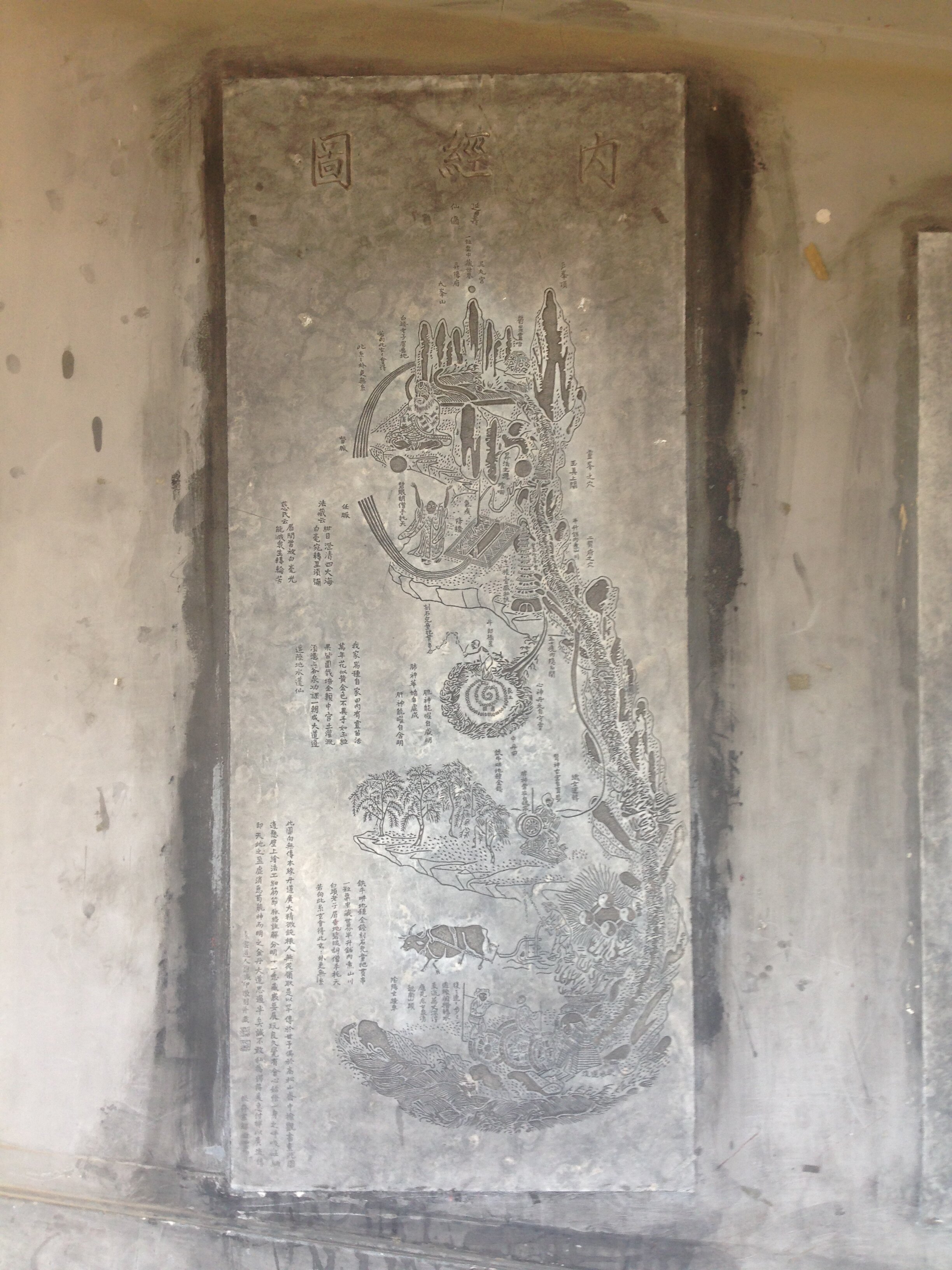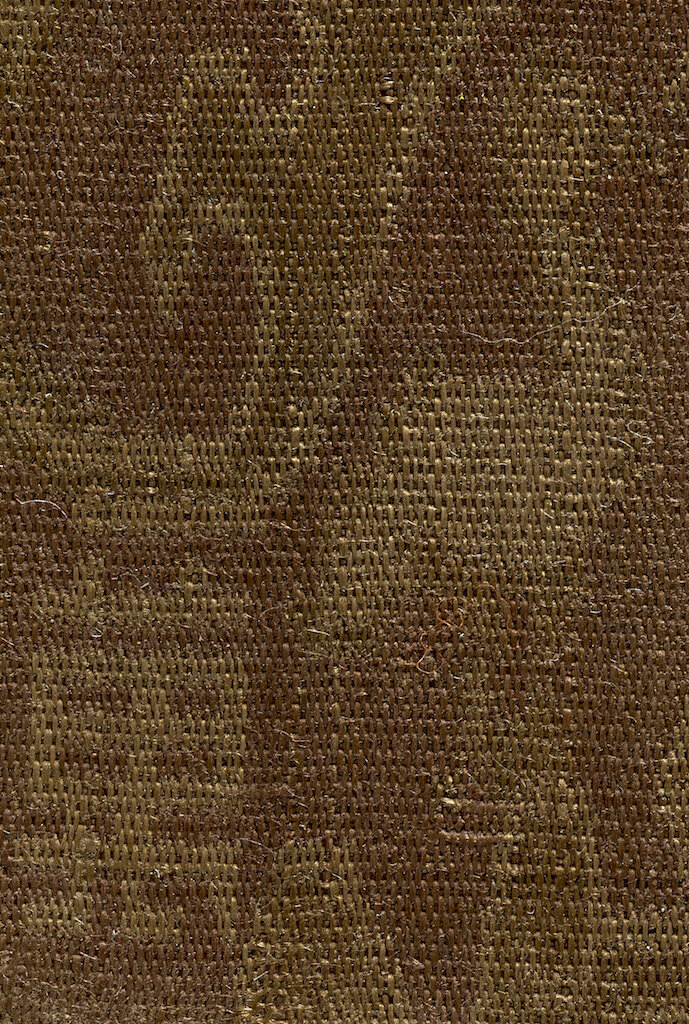Research
Anonymous, Chart of Inner Landscape (Neijing tu 內景圖), Print Block, Clay, White Cloud Monastery (Baiyun guan 白雲觀), Beijing. Photography Taken by Tobias Benedikt Zürn in 2016. © Tobias Benedikt Zürn.
Detail, Warp-Faced “Silk Figured Plain Weave,” Han Dynasty, 9.5 x 6.4 cm. Philadelphia Museum of Art: Purchased with the Bloomfield Moore Fund, Ref. No. 1934-2-2.
Huainanzi Projects
Detail, Lo Ch’ing 羅青, A Pre-Mature Birth of an Ink Butterfly 提前化作墨蝴蝶, 2007, Ink and Color on Paper, 137 x 68 cm, Private Collection
Global reception of the classic zhuangzi
The classic Zhuangzi 莊子, a collection of sayings and anecdotes traditionally attributed to Zhuang Zhou 莊周 (trad. 369-286 BCE), has deeply influenced cultural life in East Asia and beyond. A key text in East Asian religious and literary history, it is still routinely cited in diverse discussions of ethics and philosophy, and informs practices from calligraphy to landscape painting. Despite its importance in East Asia, classrooms and journals around the world rarely engage the text’s influence over the last two millennia. Today, we tend to read the Zhuangzi as a literary expression or through the lens of the academic disciplines of philosophy or religious studies. In this international research project on the global reception of the Zhuangzi, we are bringing together experts on the classic’s reception history to talk about the multifarious responses the Zhuangzi has triggered throughout the last two millennia. In other words, we show that the text has been multivocal and mutable over history, resisting narrowly defined categories and academic disciplines.
Daoist Master Performing Ritual in Front of a Guardian Lion (shishi 石獅), SIngapore. Photography Taken by Tobias Zürn in 2013. © Tobias Benedikt Zürn.
Daoist Ritual Theory
The Chinese traditions known under the umbrella term of Daoism remain a rich resource for the study of ritual. Over the last two millennia, various Daoist communities developed not only a great variety of ritual practices, but also a vast corpus of scriptures that contain elaborate illustrations and reflections upon ritualistic performances. In this project, we explore some of these materials by introducing Daoist vocabulary related to discourses of ritual and the body.



